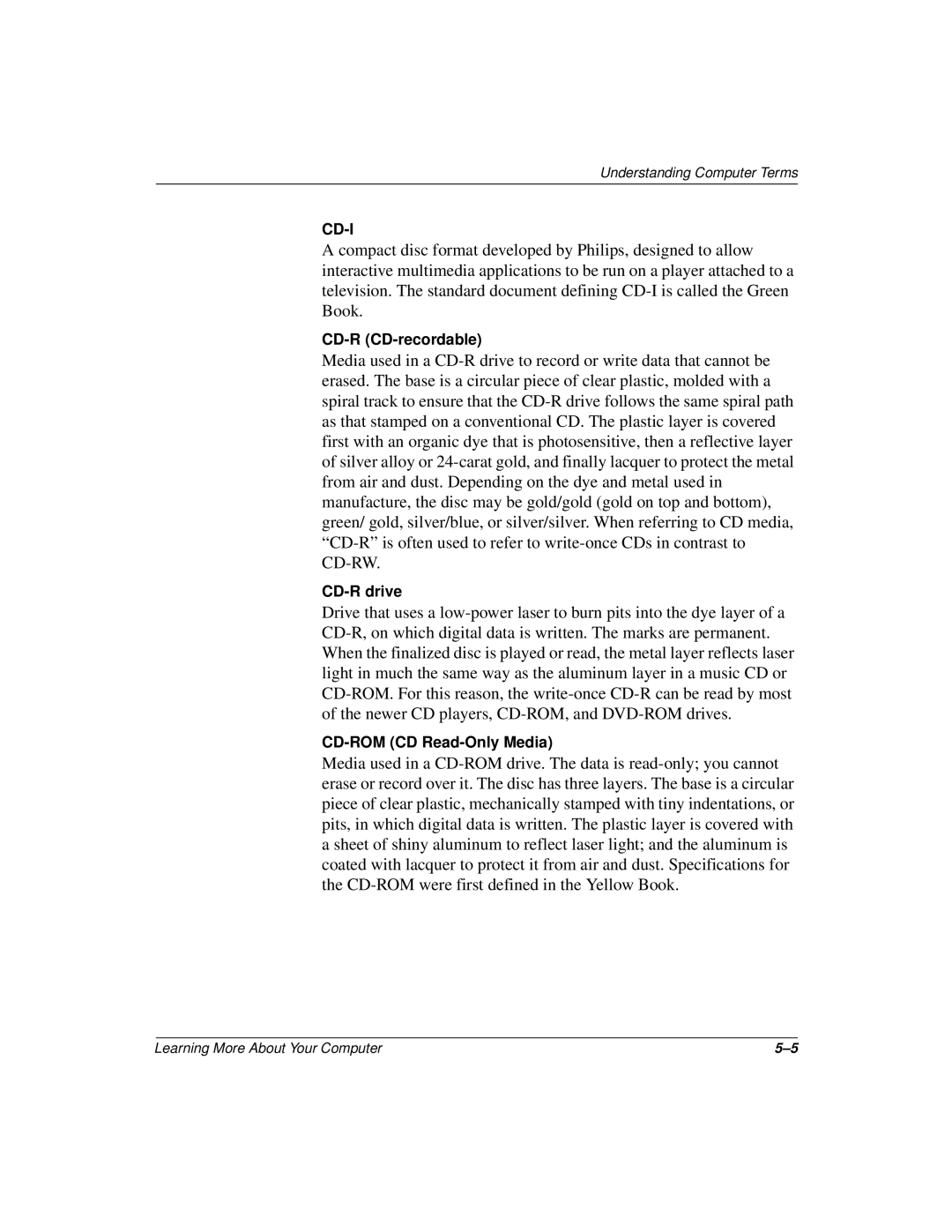Understanding Computer Terms
CD-I
A compact disc format developed by Philips, designed to allow interactive multimedia applications to be run on a player attached to a television. The standard document defining CD-I is called the Green Book.
CD-R (CD-recordable)
Media used in a CD-R drive to record or write data that cannot be erased. The base is a circular piece of clear plastic, molded with a spiral track to ensure that the CD-R drive follows the same spiral path as that stamped on a conventional CD. The plastic layer is covered first with an organic dye that is photosensitive, then a reflective layer of silver alloy or 24-carat gold, and finally lacquer to protect the metal from air and dust. Depending on the dye and metal used in manufacture, the disc may be gold/gold (gold on top and bottom), green/ gold, silver/blue, or silver/silver. When referring to CD media, “CD-R” is often used to refer to write-once CDs in contrast to CD-RW.
CD-R drive
Drive that uses a low-power laser to burn pits into the dye layer of a CD-R, on which digital data is written. The marks are permanent. When the finalized disc is played or read, the metal layer reflects laser light in much the same way as the aluminum layer in a music CD or CD-ROM. For this reason, the write-once CD-R can be read by most of the newer CD players, CD-ROM, and DVD-ROM drives.
CD-ROM (CD Read-Only Media)
Media used in a CD-ROM drive. The data is read-only; you cannot erase or record over it. The disc has three layers. The base is a circular piece of clear plastic, mechanically stamped with tiny indentations, or pits, in which digital data is written. The plastic layer is covered with a sheet of shiny aluminum to reflect laser light; and the aluminum is coated with lacquer to protect it from air and dust. Specifications for the CD-ROM were first defined in the Yellow Book.

